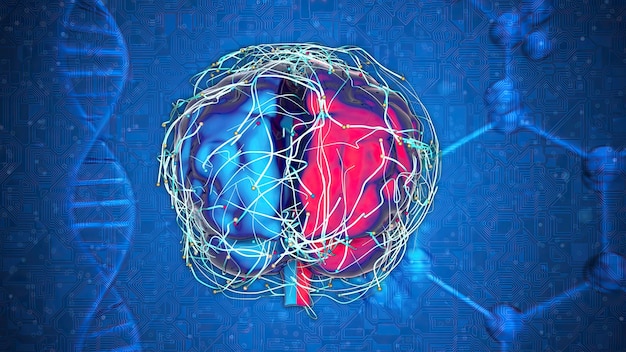Stress is a well-known factor in metabolic health, often linked to conditions like diabetes and obesity. While chronic stress has long been associated with elevated blood sugar levels, recent research in mice has revealed a surprising and rapid mechanism by which even short-term, or acute, stress can spike glucose levels—through a direct brain-to-liver neural circuit, independent of traditional hormonal pathways.
This discovery challenges the long-standing belief that stress-induced hyperglycemia is solely driven by adrenal hormones like cortisol and epinephrine, or pancreatic insulin and glucagon. Instead, scientists have identified a specific neural pathway originating in the brain that directly controls glucose production in the liver.
The study, conducted in mouse models, pinpointed a neural circuit connecting the medial amygdala (MeA)—a brain region involved in processing emotional and fear-related stimuli—to the ventral hypothalamus (VH). From there, signals are relayed directly to the liver via the autonomic nervous system.
Using advanced techniques such as optogenetics and chemogenetics, researchers were able to selectively activate or inhibit neurons in this pathway. When the MeA-VH circuit was activated—even in the absence of stress hormones—mice showed a rapid increase in blood glucose levels. Conversely, blocking this circuit prevented glucose spikes during acute stress, despite normal hormone levels.

Neural pathway linking emotional stress in the brain to glucose production in the liver
One of the most groundbreaking aspects of this research is that the glucose response occurred independently of the adrenal glands and pancreas. Even when these organs were surgically removed or pharmacologically silenced, the brain-driven glucose surge persisted.
This means the body has a fast-acting, neural 'shortcut' for mobilizing energy during stress—one that doesn’t rely on the slower process of hormone synthesis and circulation. While adrenaline and cortisol take minutes to hours to affect metabolism, this neural circuit acts within seconds, providing immediate fuel to the body in perceived threatening situations.
From an evolutionary standpoint, this rapid glucose response likely served as a survival mechanism. In the wild, an animal facing a predator needs instant energy for fight-or-flight. The brain’s ability to directly command the liver to release glucose ensures a swift metabolic response, increasing chances of survival.
However, in modern human life, where stressors are often psychological rather than physical—such as work pressure, financial worries, or social anxiety—this same system can become maladaptive. Frequent activation of this circuit could contribute to chronically elevated blood sugar, insulin resistance, and ultimately type 2 diabetes, even in individuals with no apparent endocrine dysfunction.

Chronic psychological stress may overactivate the brain-liver glucose pathway
Understanding this brain-liver axis opens new avenues for treating stress-related metabolic disorders. Traditional diabetes treatments focus on insulin sensitivity or pancreatic function, but this research suggests that targeting the nervous system could be equally important.
Future therapies might include neuromodulation techniques, such as targeted brain stimulation or drugs that selectively inhibit this neural circuit, to prevent stress-induced glucose spikes without disrupting overall hormone balance.
Moreover, non-pharmacological interventions like mindfulness, meditation, and cognitive behavioral therapy—already known to reduce stress—may also help by dampening activity in the medial amygdala, thereby reducing downstream metabolic effects.
While the findings are compelling, it’s important to note that the study was conducted in mice. The human brain is more complex, and while similar neural pathways likely exist, their exact function and significance need to be confirmed through neuroimaging and clinical studies.
Researchers are now exploring whether individuals with anxiety disorders or PTSD exhibit heightened activity in this circuit and whether that correlates with higher rates of metabolic disease. Such studies could bridge the gap between mental health and metabolic health, reinforcing the need for integrated treatment approaches.
This research reshapes our understanding of how the brain regulates metabolism. It reveals that the brain doesn’t just respond to metabolic changes—it actively commands them through dedicated neural circuits.
The discovery of the medial amygdala–ventral hypothalamus–liver pathway highlights a direct line of communication between emotional stress and blood sugar control. As science continues to unravel these connections, it becomes increasingly clear that managing stress isn’t just good for mental health—it’s essential for metabolic health too.
By targeting both mind and body, we may finally develop more effective strategies to combat the growing epidemic of stress-related metabolic diseases.

Health

Health

Health

Health

Health

Fitness

Health

Health